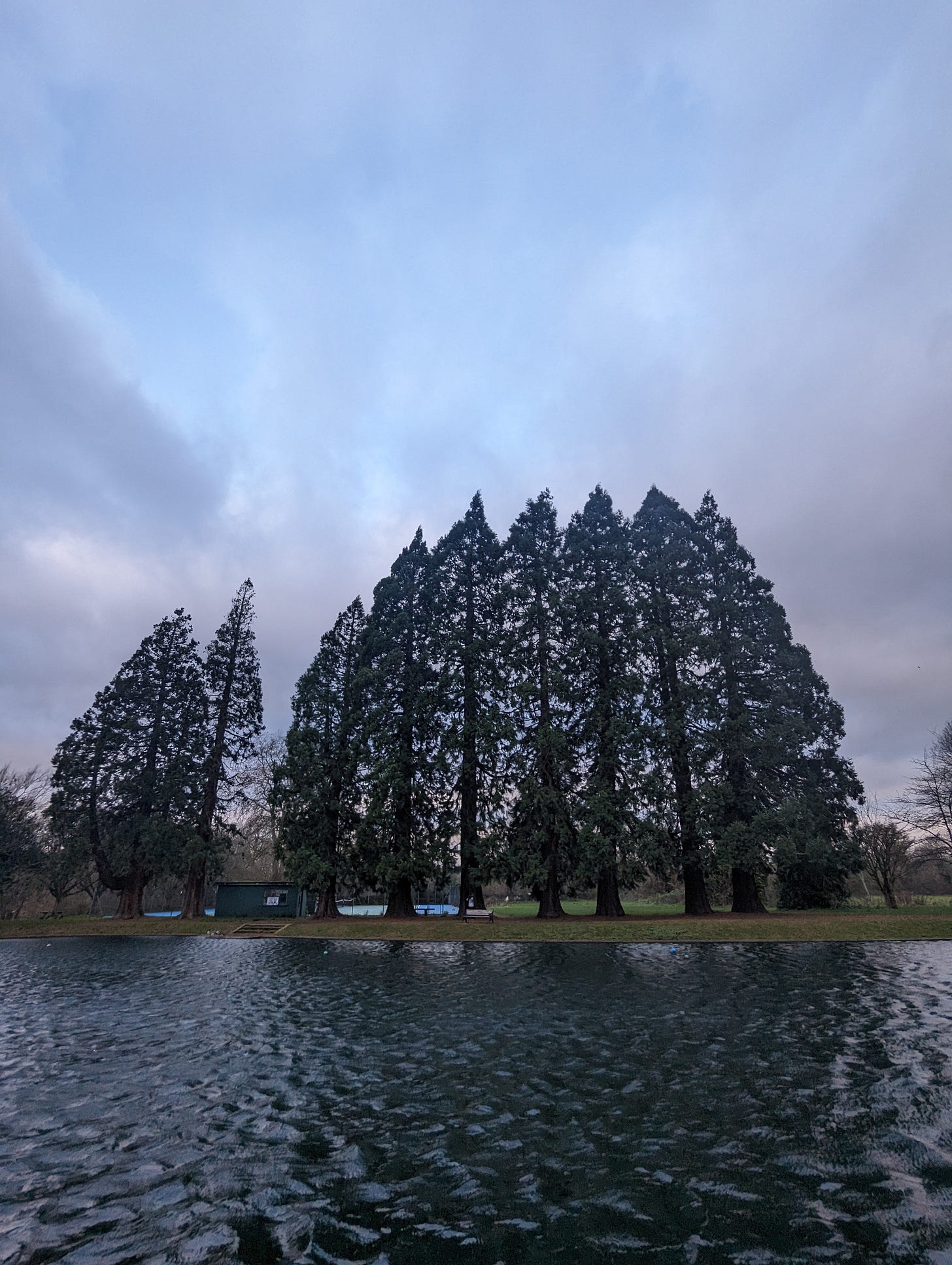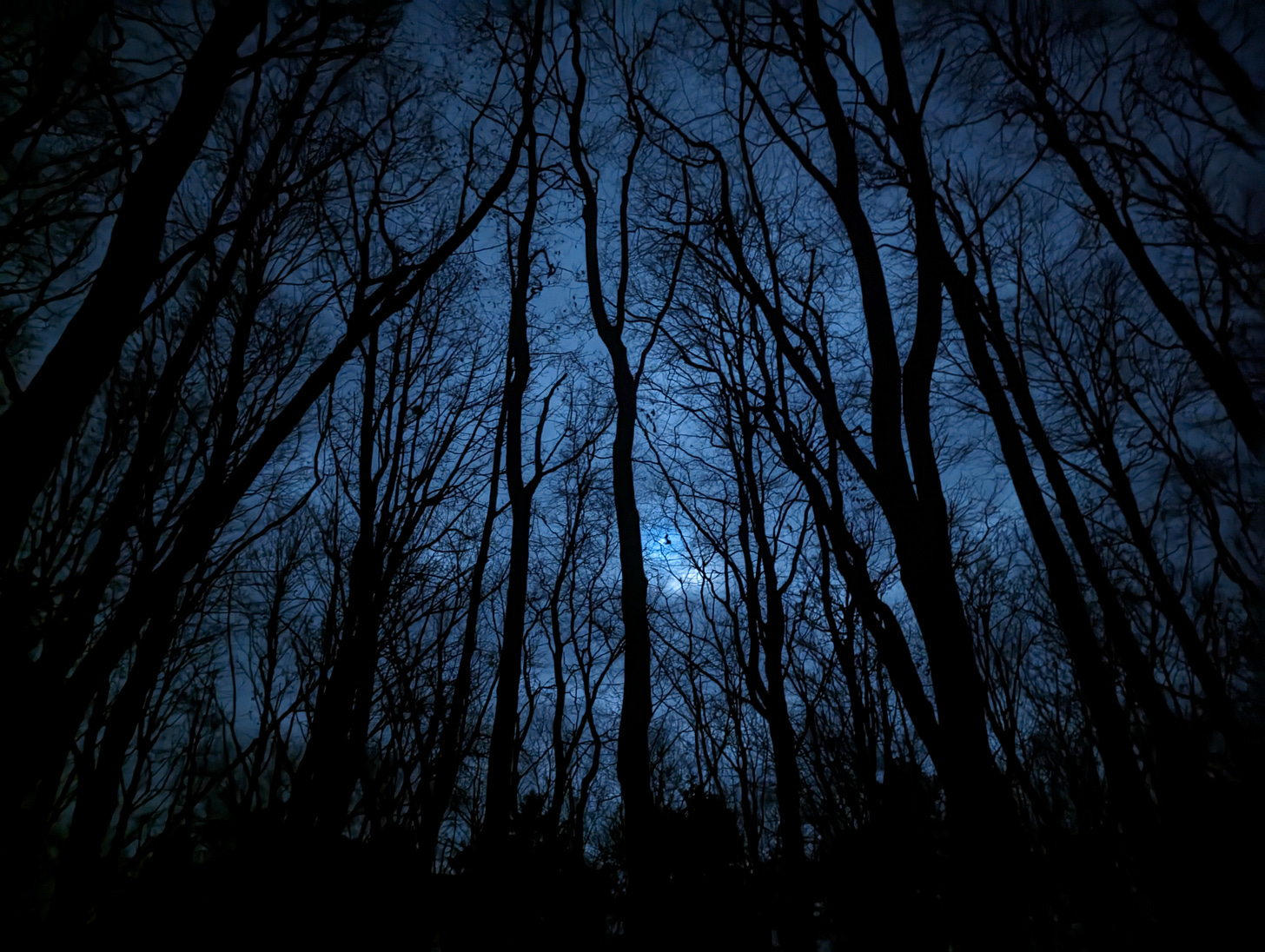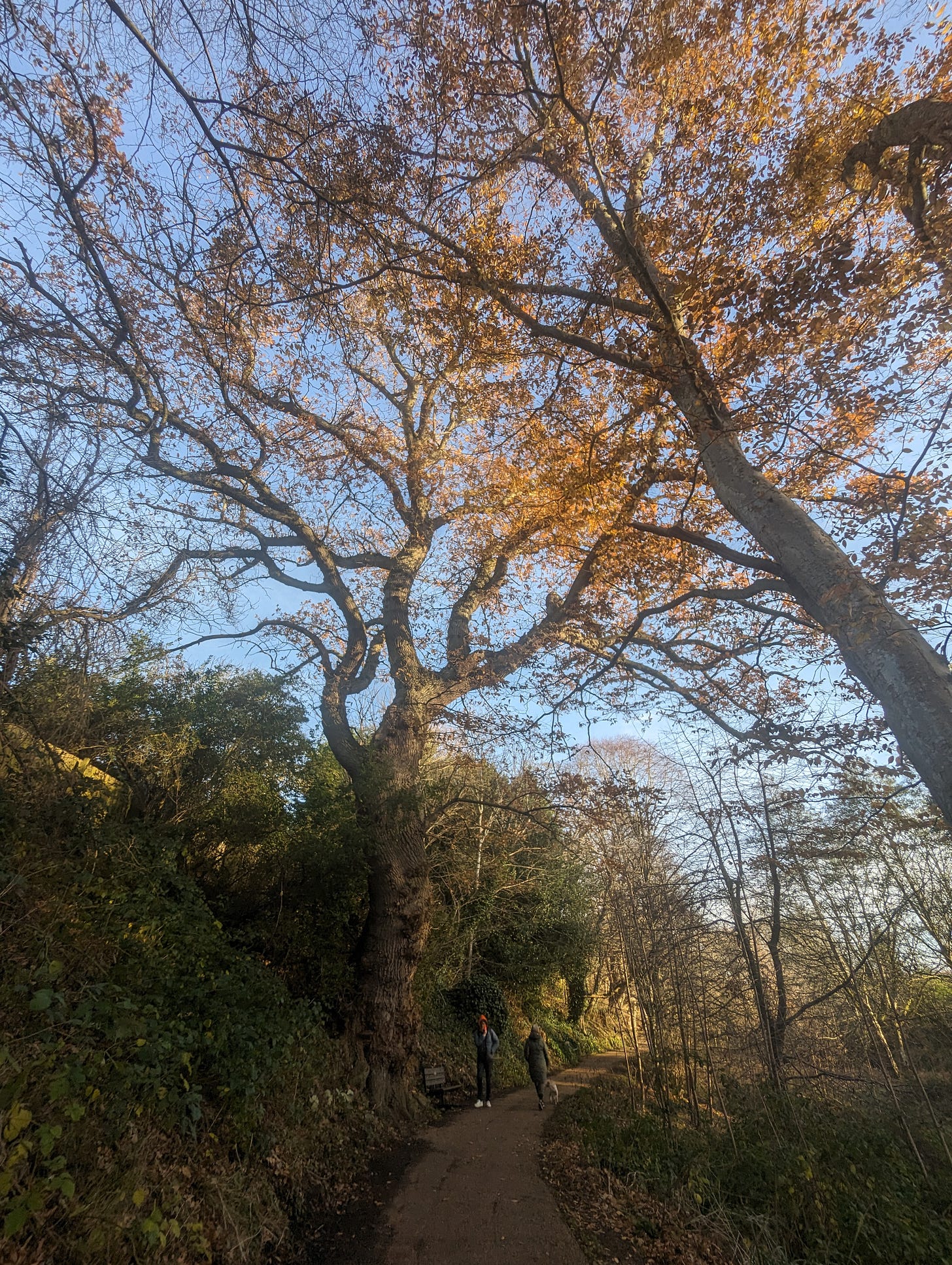Introduction
This is the first post in a series on human-arboreal1 (tree and/or forest) relations in literature, based on several essays from this term’s course work in social anthropology. The first term is finally done, therefore I am able to catch up on posts here and prepare this series!
The inspiration for the idea came from the assignment to explore contributions of literary anthropology to research. There are two parts to the sub-discipline of literary anthropology: 1) the ways literature may provide anthropological insights; and 2) the writing of anthropological literature, i.e. literary tools and means anthropologists use to communicate their research. My focus is on the first, anthropological insights that may be gained from literature,2 specifically regarding human-arboreal relations. Since there is no comparable, existing study on trees in the Hebrew Bible, my intent is to explore what might be (or has already been) gained from studying other literature for anthropological insights. One, it is a refining exercise, learning to read what is and is not said and how to analyse a text for societal (and ontological) insights. Two, since there exist studies on trees and forests in other genres I hope to learn methods and approaches from them that will help me develop my future research.
Given the massive scope of this sub-field, I decided to focus on three genres I already have some familiarity with and authors I have read: George MacDonald, J.R.R. Tolkien, and Ursula Le Guin. In this first post I will lay the groundwork and provide the anthropological background to the study. Then each subsequent post will focus on a genre, a summary of the selected author, work, and a critical analysis. The final post will be a synthesis of the whole, with reflections and considerations. The overall goal is to come back to the future research on trees in the Hebrew Bible, but the literary study on human-arboreal relations in these genres is also interesting in itself.
This first post may be the most technical, but I think it will all come together for you when the genre examples are introduced in the forthcoming posts. This is also likely to be less interesting if you’re here primarily to read about ents, cursed forests, or the dream-state of trees, but as I had to first understand this before I was able to understand the import of literary forests and trees for our world, I hope you will bear with me!
First Steps
First, an overview of what anthropology offers to this type of study. At its core, it is a plumb line that keeps the focus of the research on the intended subject: humans, their condition and society. Over the centuries of anthropological work, anthropology has explored what society structures and norms tell us about humanity (Bernard and Gravlee 2015:1). The historical/traditional model of anthropology focused on going “far away” (from the usually European-based research center) to a society that was different from that of the anthropologists’ (Bernard and Gravlee 2015:2). The disparities allowed the researchers to see more clearly, they believed, the norms and mores3 underlying a community. It is only in recent decades that anthropologists have begun to undertake ethnographic work closer to home, in the European West, striving to understand their own or adjacent societies with the tools developed abroad (Bernard and Gravlee 2015:5). The difficulty of seeing what is presumably familiar was offset by the methodology anthropologists had developed in dissimilar societies.

Works of literature often include commentaries on or reflections of the author’s reality. Analysing a story from an anthropological perspective may be a productive exercise in order to understand the world of the author—that is, our world—via the story, that is, the one reality may be a mirror of this world or a window to the other, an act of interpretation or translation, which may reveal reality as it is or is not, as it should be or is wished to be. The three genres reviewed here—fairy tale, fantasy, and sci-fi—are well-established in their use of forests and trees, which provide an ideal ground on which to examine the potential contribution of literary trees and forests to anthropological understanding. As traditional anthropological work focused on going to far-away communities to bring insights back to the anthropologists’ home societies, here the world of story serves as the far-away land from which we gain insights to bring back to our world.
The particular type of anthropology undertaken here may be classified as hermeneutical. While hermeneutics initially developed as a tool of interpretive analysis in biblical studies, anthropology developed hermeneutics from that foundation of continual interpretation of “the words of those texts in order to understand their original meaning and their directives for living in the present” (Bernard 2002:449) to application in other “texts”, that is, oral narratives, be they speeches, story telling, performances, and so on (Bernard 2002:450). The anthropological hermeneutical analysis definition may be taken from Bernard’s neat summary: “This is hermeneutical analysis—the search for meanings and the interconnection in the expression of culture” (2002:451).
Trees in the Hebrew text have been studied for their meaning, theologically, as metaphors, as well as symbolic implications in religious, and, in Christian circles, the meaning of the text for present application. While recent trends aim to understand the Bible through “non-Western eyes”,4 that focus is on a cross-cultural framework. In contrast, the anthropological goal is not necessarily focused on what the text means, rather, but to reconsider the texts in light of what they can tell us about the society that produced them. (Which, this does comes back around to helping us understand the meaning of the text.)
Contemporary anthropological studies of trees provide resources and perspectives for considering trees in the ancient society. This may be broadly categorized as an interest in nature-society relations, e.g. how the non-human factors shape a society and vice-versa. Here I will note that the non-human factors are significant in comparison to the human factors. But this is an anthropo-centric5 discipline and the primary interest in the research is the human community. What we can learn about arboreal culture in the Hebrew text is of interest, but the lens is irrevocably focused on the human.
The contemporary research into this subject usually falls within multi-species ethnography, also termed anthropology-beyond-the-human, with specific focus on arboreal-human relations. In short, it looks to study the non-humans (plants and animals, for example) present in human society and how the human and the non-human influence the formation of the community overall. One of the primary distinctives of this methodology is the perspective it brings to defining what it means to be human (Ogden Hall Tanita 2013:6) and thus in doing so it refines the core of the discipline: what is unique about anthropology? If ethnography is understood as the work of describing the lives of those in a given society, and anthropology is focused on understanding the human and our—all species—shared world (see Ingold 2011:229), anthropology-beyond-the-human seeks to “educate our perception” of the world, that is, the human perception (Ingold 2011:229, emphasis original). If anthropology beyond the human is, as the method currently stands, interested in how different species are shaped and shaping each other (Kirksey Helmrich 2010), it follows that “becoming with” is the nexus for not just understanding the human species but all species (Haraway 2008:244; Kirksey Helmreich 2010:546; Ingold 2013:20-21). In this becoming with, all agents—be they human, flora or fauna, or even (perhaps) mountains, glaciers, and rivers (see Van Dooren et all 2016:4)—are influenced by the others and the nature of the relations in a given “contact zone” (Ingold 2013:21). The hierarchy, of power or value, that might be noted in previous anthropological studies is broken down in this relation of withness between agents who are equal in their unique differences (Ingold 2013:21).
In literary anthropology, the same interests of anthropology-beyond-the-human inform the study of human-arboreal (tree/forest) relations in the story. The questions asked of the stories will be considered in light of common anthropological inquiries: power relations between the forests and the humanoid characters, norms and mores6 utilised to construct and/or maintain societal structures, and perceptions of the other—relative to each culture within the bounds of the narrative. Further, I will reference the four conceptual spaces trees occupy, discussed in the work of Cloke and Jones: culture, agency, place, ethics (Cloke and Jones 2002). Although the focus may not be a particular tree but a forest, I believe Cloke and Jones’ argument for the value of particularity for understanding how every given tree may have a specific culture, a unique agency, a distinct place, and an ethical position, may extend to the forest when considered as a single entity.
Now to the literary works. As noted above, the first genre is fairy tales, and in “No Forest, No Story” I will consider the human-forest relations presented in a selection of George MacDonald’s short fairy tales. The second genre is fantasy, and, as a study of literary trees would not be complete without engaging with J. R. R. Tolkien’s Middle Earth in The Lord of the Rings, I examine relevant elements of Middle Earth in “The Trees are Well, All is Right in the World.” The final genre is science fiction and Ursula Le Guin’s classic short story The Word for World is Forest provides directly relevant content for anthropological interests: “The Word for Forest is the World.” These three examples from fairy tales, fantasy, and sci-fi each highlight unique aspects of human-arboreal relations that might illuminate those relations in this world. A detailed exploration of the dynamics observed in each genre, as well as in the works of specific authors, would be well worth pursuing, but for the purposes of this series, I will attempt to draw out several themes which correlate to our world’s human-arboreal concerns: interdependence, reality is more than what we see, and the essence of forests.
Bibliography
Bernard, H. R. & C. C. Gravel (eds) 2015a. Handbook of methods in cultural anthropology. (2nd edition). London: Rowman & Littlefield.
––––––– 2015b. Introduction: on methods and methods in anthropology. In Handbook of methods in cultural anthropology (eds) H. R. Bernard & C. C. Gravlee, 1–17. (2nd edition). London: Rowman & Littlefield.
Jones, O. & P. Cloke 2020. Tree Cultures: The Place of Trees and Trees in Their Place. Oxon: Routledge.
Haraway, D. J. 2016. The companion species manifesto: dogs, people, and significant otherness. In Manifestly Haraway (eds) D. J. Haraway & C. Wolfe, 91–108. University of Minnesota Press (available on-line: https://www.jstor.org/stable/10.5749/j.ctt1b7x5f6.5).
Ingold, T. 2011. Being alive: essays on movement, knowledge, and description. Oxon: Routledge.
––––––– 2013. Anthropology beyond humanity. Suomen Antropologi: Journal of the Finnish Anthropological Society 38, 5–23
Kirksey, S. E. & S. Helmreich 2010. The emergence of multispecies ethnography. Cultural Anthropology 25, 545–576.
Le Guin, U. K. 2015. The Word for World is Forest. London: Gollancz.
MacDonald, G. 1999. The Complete Fairy Tales (ed U. C. Knoepflmacher). New York City, NY: Penguin Books.
Ogden, L. A., B. Hall & K. Tanita 2013. Animals, plants, people, and things: a review of multispecies ethnography. Environment and Society 4, 5–24.
Tolkien, J. R. R. June 30, 1972. [339. Letter to the Editor of the Daily Telegraph, 1972] Retrieved from, The Letters of J. R. R. Tolkien, 1981, H. Carpenter (ed). New York City, NY: HarperCollins
––––––– 1991. The Lord of the Rings. New York: Houghton Mifflin.
Van Dooren, T., E. Kirskey & U. Münster 2016. Multispecies studies: cultivating arts of attentiveness. Environmental Humanities 8, 1–23.
Relating to trees and forests - “Arboreal, Adj., Sense 1.” Oxford English Dictionary, Oxford UP, March 2024, https://doi.org/10.1093/OED/3142921480.
The reason I use “arboreal” instead of only “tree” or only “forest” is because there are distinctions in society and literature in how they treat individual trees vs forests. In this essay, both come up, but I’m not focused on the distinction—for now—and when referring to both, I use the term “arboreal”, that is, “relating to trees and forests”.
One example of this might be how Jane Austen’s novels provide insight into the social norms and expectations of her day
In cross-cultural studies, norms are “shared expectations or rules that guide behavior within a society or group” while mores are “customs or conventions that are considered morally significant within a society.”
For example, see Richards, R. E. & B. J. O’Brien. 2012. Misreading Scripture with Western eyes : removing cultural blinders to better understand the Bible. Downers Grove, IL: IVP Books.; and Bailey, K. E. 2008. Jesus through Middle Eastern eyes: cultural studies in the Gospels. London: SPCK.
Relating to the human - “Anthropo-, Comb. form.” Oxford English Dictionary, Oxford UP, December 2024, https://doi.org/10.1093/OED/6012102204.
See note 3







